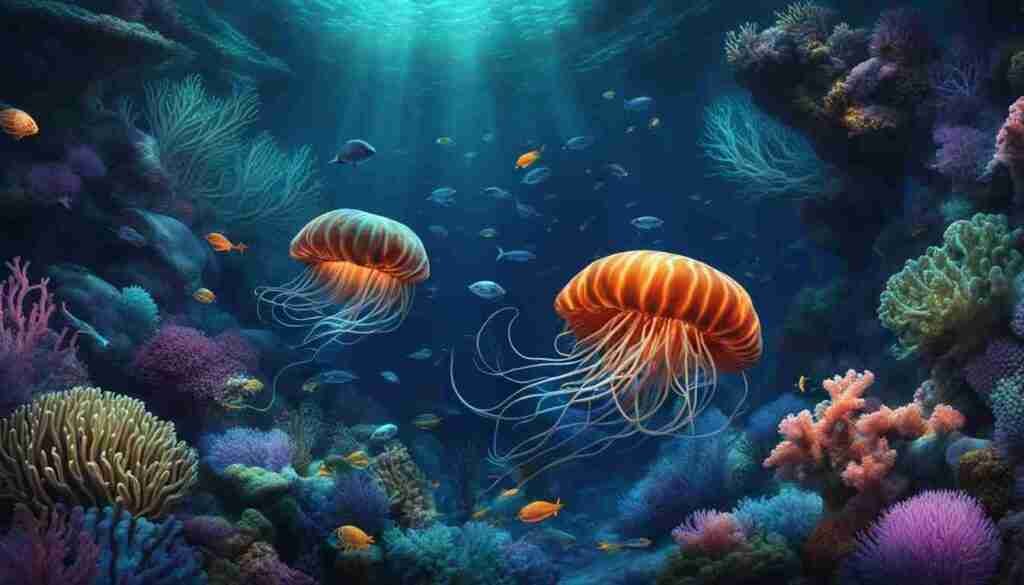The ocean covers over 70% of our planet, and while much of it remains unexplored, the deep sea represents one of the last frontiers of scientific discovery. Beyond the reach of sunlight, deep-sea ecosystems host a diverse array of organisms that have adapted to extreme conditions. This article delves into the characteristics of deep-sea ecosystems, their unique inhabitants, the challenges they face, and the importance of understanding these mysterious environments.
1. Understanding Deep-Sea Ecosystems
Deep-sea ecosystems are typically defined as environments located at depths greater than 200 meters (656 feet). The conditions in these areas are vastly different from those in shallower waters:
- Pressure and Temperature: As depth increases, so does pressure—often exceeding 1,000 times that of sea level. Temperatures can plummet to near freezing, creating a challenging environment for life.
- Light Absence: In the deep sea, sunlight cannot penetrate, resulting in complete darkness. This absence of light has led to unique adaptations among organisms that thrive in these conditions.
- Nutrient Availability: Nutrients in the deep sea are primarily derived from the surface waters, often falling to the ocean floor as organic debris. Many deep-sea organisms rely on these “marine snow” particles for sustenance.
2. Unique Inhabitants of the Deep Sea
The deep sea is home to a remarkable diversity of life, often featuring bizarre adaptations that enable survival in extreme conditions:
- Bioluminescent Organisms: Many deep-sea species, such as the anglerfish and certain jellyfish, possess bioluminescence—an ability to produce light. This adaptation is used for attracting prey, communication, and camouflage.
- Giant Squid: Once considered a myth, the giant squid can grow up to 13 meters (43 feet) long. Its elusive nature and mysterious behavior have made it a subject of fascination and research.
- Hydrothermal Vent Communities: These unique ecosystems thrive near hydrothermal vents, where heated water rich in minerals supports a variety of organisms, including tube worms, clams, and extremophile bacteria. These organisms rely on chemosynthesis rather than photosynthesis, utilizing the chemicals in the vent water for energy.
- Deep-Sea Coral Reefs: Contrary to the notion that coral reefs only exist in shallow waters, deep-sea coral reefs thrive at depths of 200 meters or more. These slow-growing corals provide essential habitats for numerous marine species.
3. The Importance of Deep-Sea Ecosystems
Deep-sea ecosystems play a crucial role in the overall health of the planet:
- Carbon Sequestration: The deep sea acts as a significant carbon sink, storing vast amounts of carbon dioxide absorbed from the atmosphere. This process helps mitigate climate change.
- Biodiversity Reservoirs: Deep-sea habitats are home to many unique and undiscovered species, contributing to global biodiversity. The genetic diversity found in these ecosystems may hold potential for future scientific and medical advancements.
- Nutrient Cycling: Deep-sea organisms play a vital role in nutrient cycling, breaking down organic matter and facilitating the movement of nutrients through the ocean.
4. Challenges Facing Deep-Sea Ecosystems
Despite their importance, deep-sea ecosystems are under threat from various human activities:
- Overfishing: Deep-sea fishing practices, including trawling, can devastate marine habitats, leading to significant declines in fish populations and destruction of coral reefs.
- Pollution: Chemicals, plastics, and heavy metals from human activity often find their way into the deep sea, impacting the health of marine organisms and ecosystems.
- Climate Change: Rising ocean temperatures, ocean acidification, and changes in current patterns affect the delicate balance of deep-sea environments, potentially leading to species loss and ecosystem collapse.
- Deep-Sea Mining: The push for mineral resources from the ocean floor poses significant risks to deep-sea ecosystems. Mining operations can disrupt habitats and threaten the unique biodiversity found in these regions.
5. The Future of Deep-Sea Research and Conservation
To protect deep-sea ecosystems, increased research and conservation efforts are essential:
- Exploration and Mapping: Continued exploration of the deep sea is vital to understanding its ecosystems and biodiversity. Advances in technology, such as remotely operated vehicles (ROVs) and autonomous underwater vehicles (AUVs), allow scientists to explore previously unreachable depths.
- Protected Areas: Establishing marine protected areas (MPAs) can help safeguard critical habitats from overfishing and pollution. These areas can provide refuge for vulnerable species and promote recovery.
- Sustainable Practices: Encouraging sustainable fishing and responsible resource extraction practices is crucial for the long-term health of deep-sea ecosystems.
- Public Awareness: Raising awareness about the importance of deep-sea ecosystems and the threats they face can foster support for conservation initiatives and responsible ocean stewardship.
Conclusion
The deep sea remains one of the least understood environments on Earth, yet it is home to a wealth of biodiversity and plays a critical role in global climate stability. Understanding and protecting these mysterious ecosystems is essential for maintaining the health of our planet. As we continue to explore the ocean depths, we uncover not only the secrets of the deep but also the urgent need to preserve these unique habitats for future generations. By investing in research and conservation, we can ensure that the wonders of the deep sea endure, revealing the extraordinary life that thrives beneath the waves.

